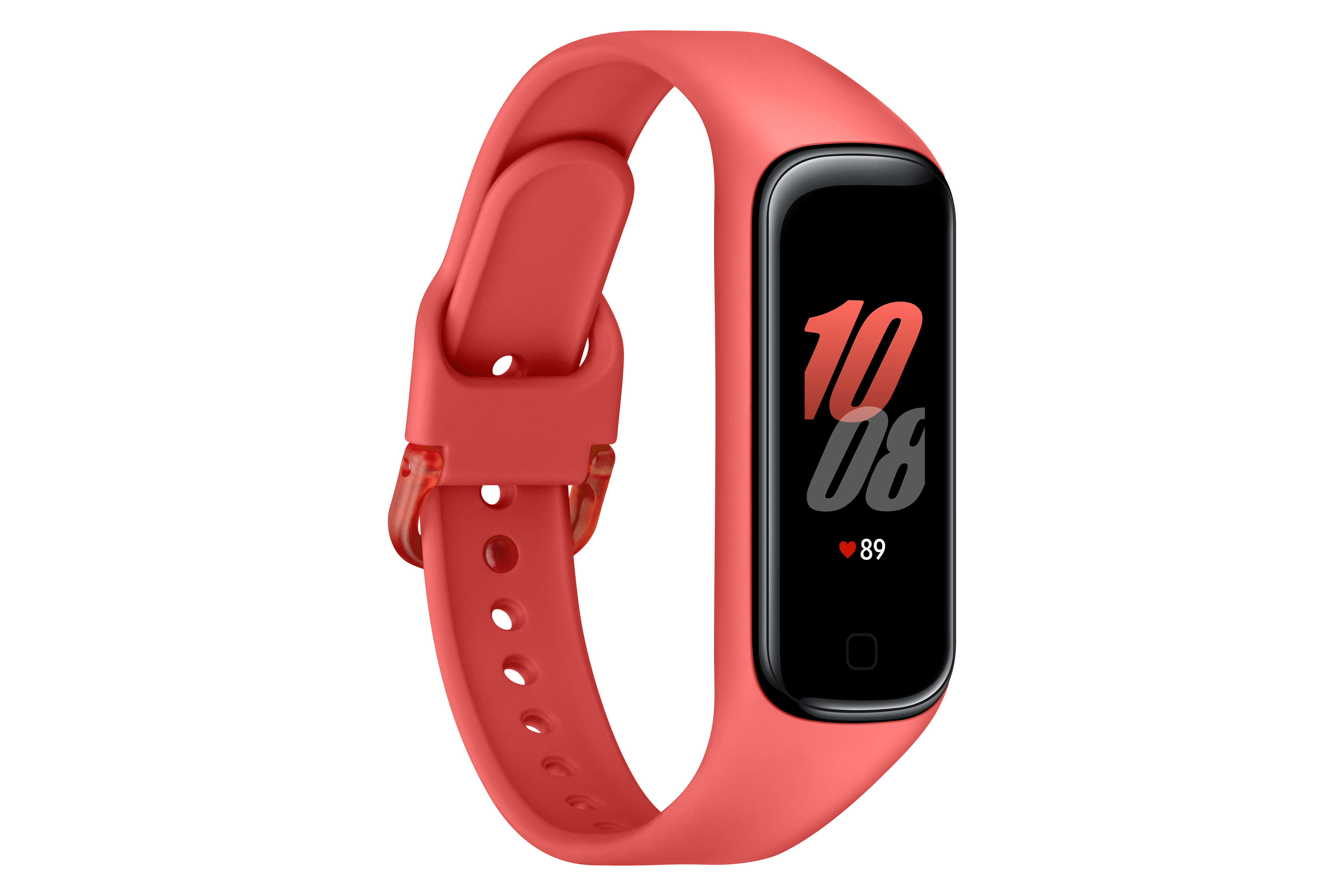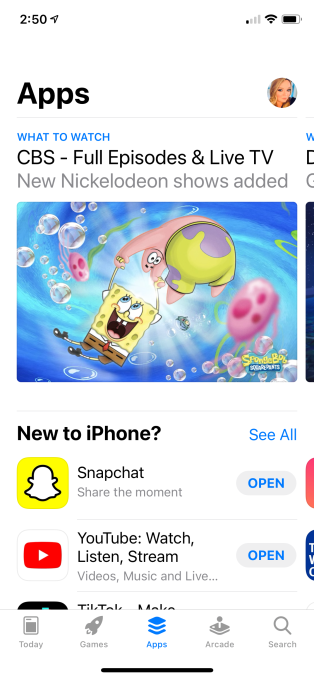Facebook’s video destination, Facebook Watch, is introducing a new feature called “Your Topics” that will allow you to tailor its feed to include more of the content you want to see. Currently, Facebook leverages its existing understanding of each viewer’s interests to personalize the Watch Feed. Topics, however, will allow users to more explicitly tell Facebook what sort of things they like by exploring and subscribing to various content categories.
The feature has been quietly rolling out to Facebook users in recent days, and now some portion of the user base already has the feature in their own Facebook app.
Among the first to notice the new addition was Twitter user @whimchic, who regularly spots updates and changes to mobile applications before they’re made public.
They were alerted to the feature through a pop-up within Watch on the Facebook mobile app, we’re told. Here, a message explained that Facebook will now focus on showing more of the videos related to the #Topics you follow.
“Due to the many different ways your Watch feed is determined and how videos get categorized, you may see videos in your Watch feed that you aren’t interested in,” the message also warned. “Some videos related to the #Topics or Pages you follow may not appear in your Watch feed,” it noted.
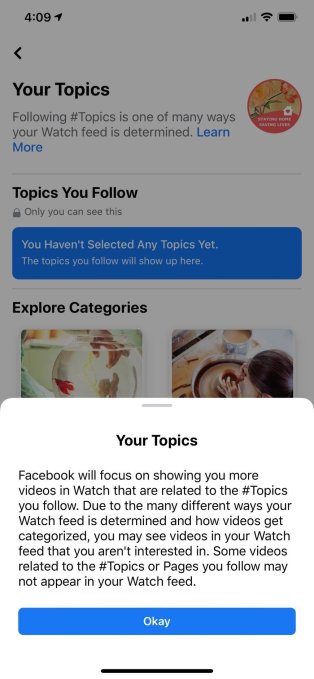
Image Credits: Facebook app, screenshot via @whimchic
If you have the feature, you can access it for yourself by clicking on the Profile icon in the Facebook Watch tab on mobile, then clicking on the link to “Your Topics” to browse the available categories.
The subcategories which you can actually follow or unfollow are grouped underneath broader category pages, like Animals, Art & Design, Books, Business, Education, Fashion & Style, Food, Games, History & Philosophy, Home & Garden, Music, Performing Arts, Science & Tech, Sports, Travel & Leisure, TV & Movies, and Transportation.
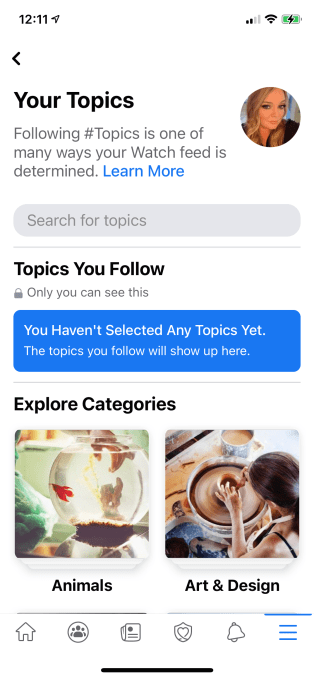
Image Credits: Facebook app, screenshot via TechCrunch
However, you can’t follow these high-level categories themselves — you have to click inside them to follow the individual topics. These can be very specific. For example, within Animals, you could follow #EndangeredSpecies or #GoldenRetrievers. Within Travel & Leisure, you could follow #TravelOceania or #WinterActivities. And so on.
But the subcategory listings are not comprehensive. Upon testing the feature within the Facebook app on my iPhone, a search for many other possible topics yielded no results. (What, no #Corgi videos?!) This, of course, could change in time as the feature is expanded.
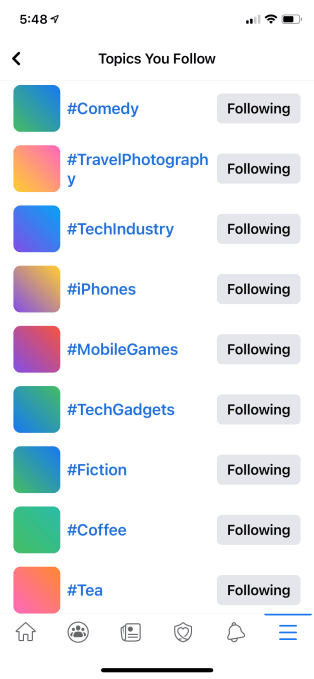
Image Credits: Facebook app, screenshot via TechCrunch
Once you follow a topic, a message will confirm your choice and then the topic will appear under “Topics You Follow” in the Your Topics section of Facebook Watch.
From here, you can choose to unfollow the topic later on if you decide you want to see less of it in your feed. And if you want to watch only videos from a given topic, you can tap the topic to delve into a customized feed.
The feature is now one of several ways users can personalize and filter their broader Facebook Watch feed.
You can also filter the feed by Live, Music, Following, Shows, Gaming and more, by tapping on the buttons at the top of the screen or from the What’s on Watch category picker that shows up as you scroll further down the Watch Feed.
Facebook also adds groupings like its editorially curated “Get Caught Up” section with videos from paid partners, or those groupings that are more algorithmically sorted, like the one with videos that got the most “HaHa’s” or “Loves” this week, or those that are popular with friends.
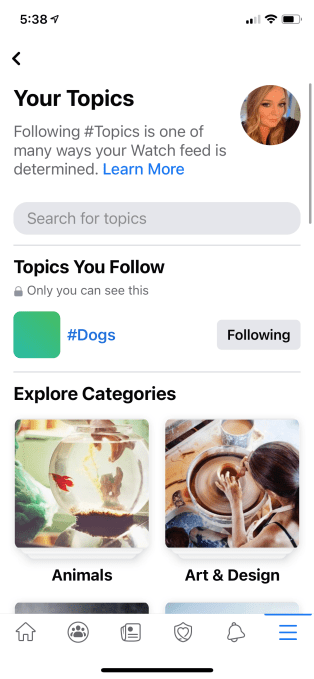
Image Credits: Facebook app, screenshot via TechCrunch
The new feature could make Facebook Watch more competitive with YouTube, where there’s historically been a heavier focus on connecting users with individual channels to subscribe to. But YouTube has also embraced Topics in its own way, with broad categories like “Gaming” and “Fashion & Beauty” that are now a part of its main navigation. And it puts personalized topics at the top of the home page directing signed-in users to categories of videos they tend to watch.
Twitter, of course, has its own Topics feature, too, which showcases top tweets that match a particular interest. These may or may contain videos, however.
Reached for comment, a Facebook spokesperson confirmed the addition of Topics, saying “we’re working on more ways to connect people with videos that match their interests.” No further details were provided.

